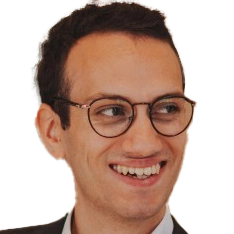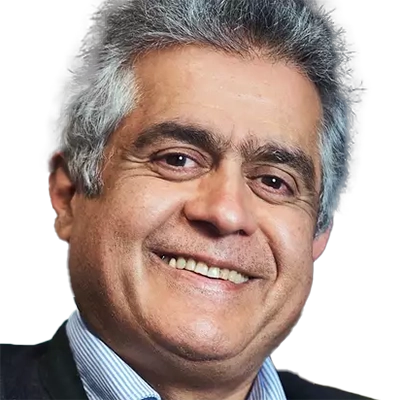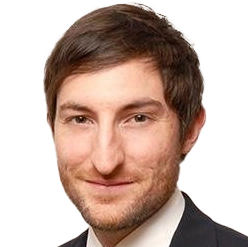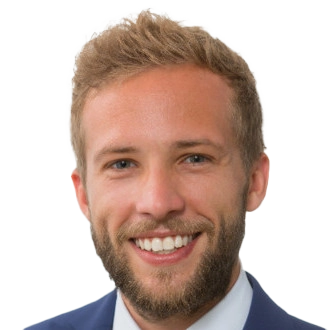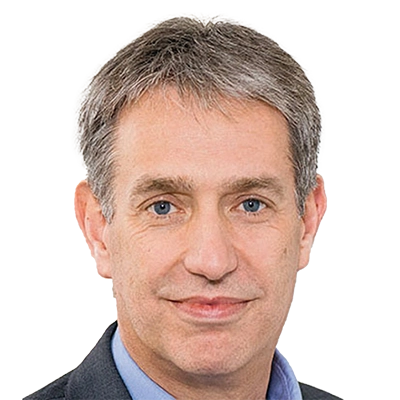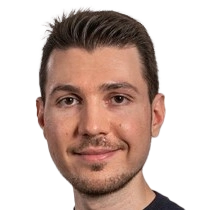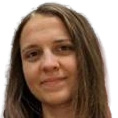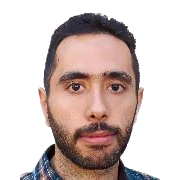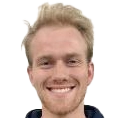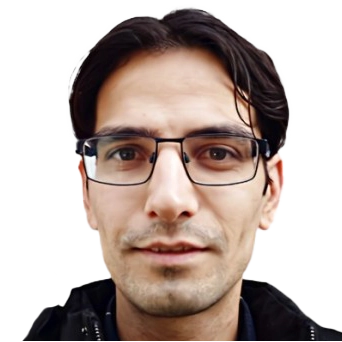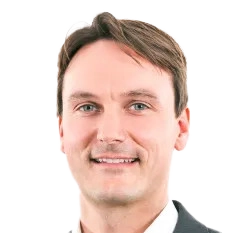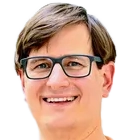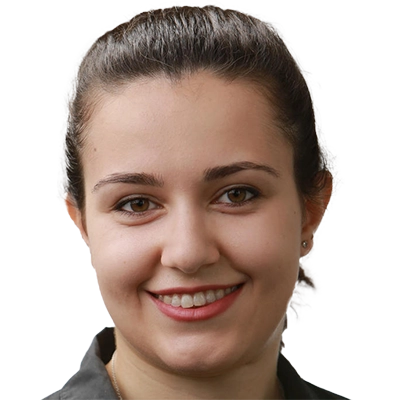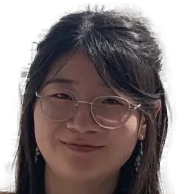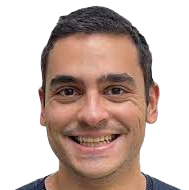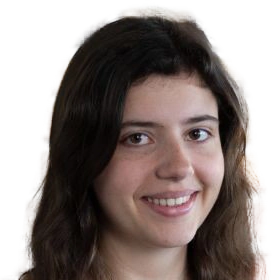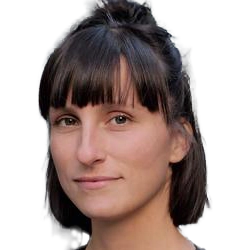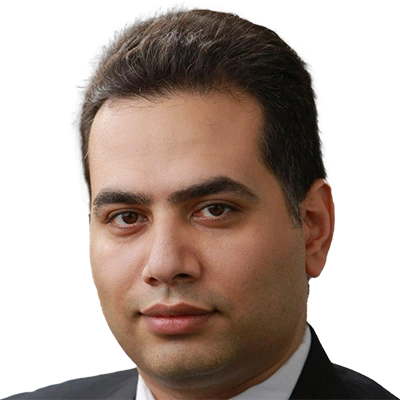01.10.2024
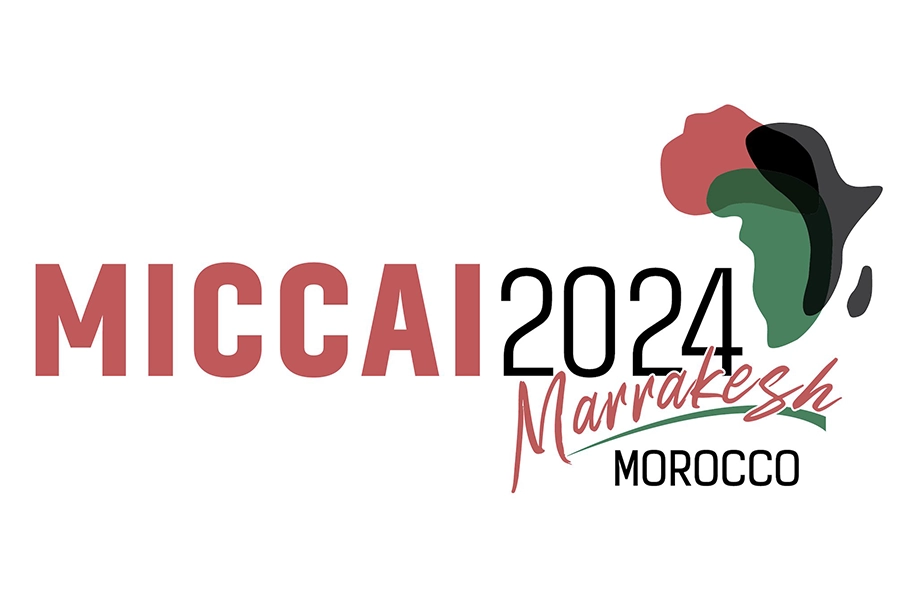
MCML researchers with 16 papers at MICCAI 2024
27th International Conference on Medical Image Computing and Computer Assisted Intervention (MICCAI 2024). Marrakesh, Morocco, 06.10.2024–10.10.2024
We are happy to announce that MCML researchers are represented with 16 papers at MICCAI 2024:
MAGDA: Multi-agent Guideline-Driven Diagnostic Assistance.
2nd International Workshop on Foundation Models for General Medical AI (MedAGI 2024) at the 27th International Conference on Medical Image Computing and Computer Assisted Intervention (MICCAI 2024). Marrakesh, Morocco, Oct 06-10, 2024. DOI.
Abstract
In emergency departments, rural hospitals, or clinics in less developed regions, clinicians often lack fast image analysis by trained radiologists, which can have a detrimental effect on patients’ healthcare. Large Language Models (LLMs) have the potential to alleviate some pressure from these clinicians by providing insights that can help them in their decision-making. While these LLMs achieve high test results on medical exams showcasing their great theoretical medical knowledge, they tend not to follow medical guidelines. In this work, we introduce a new approach for zero-shot guideline-driven decision support. We model a system of multiple LLM agents augmented with a contrastive vision-language model that collaborate to reach a patient diagnosis. After providing the agents with simple diagnostic guidelines, they will synthesize prompts and screen the image for findings following these guidelines. Finally, they provide understandable chain-of-thought reasoning for their diagnosis, which is then self-refined to consider inter-dependencies between diseases. As our method is zero-shot, it is adaptable to settings with rare diseases, where training data is limited, but expert-crafted disease descriptions are available. We evaluate our method on two chest X-ray datasets, CheXpert and ChestX-ray 14 Longtail, showcasing performance improvement over existing zero-shot methods and generalizability to rare diseases.
MCML Authors
Topologically faithful multi-class segmentation in medical images.
27th International Conference on Medical Image Computing and Computer Assisted Intervention (MICCAI 2024). Marrakesh, Morocco, Oct 06-10, 2024. DOI.
Abstract
Topological accuracy in medical image segmentation is a highly important property for downstream applications such as network analysis and flow modeling in vessels or cell counting. Recently, significant methodological advancements have brought well-founded concepts from algebraic topology to binary segmentation. However, these approaches have been underexplored in multi-class segmentation scenarios, where topological errors are common. We propose a general loss function for topologically faithful multi-class segmentation extending the recent Betti matching concept, which is based on induced matchings of persistence barcodes. We project the N-class segmentation problem to N single-class segmentation tasks, which allows us to use 1-parameter persistent homology, making training of neural networks computationally feasible. We validate our method on a comprehensive set of four medical datasets with highly variant topological characteristics. Our loss formulation significantly enhances topological correctness in cardiac, cell, artery-vein, and Circle of Willis segmentation.
MCML Authors
On Differentially Private 3D Medical Image Synthesis with Controllable Latent Diffusion Models.
4th International Workshop on Deep Generative Models (DGM4 2024) at the 27th International Conference on Medical Image Computing and Computer Assisted Intervention (MICCAI 2024). Marrakesh, Morocco, Oct 06-10, 2024. DOI. GitHub.
Abstract
Generally, the small size of public medical imaging datasets coupled with stringent privacy concerns, hampers the advancement of data-hungry deep learning models in medical imaging. This study addresses these challenges for 3D cardiac MRI images in the short-axis view. We propose Latent Diffusion Models that generate synthetic images conditioned on medical attributes, while ensuring patient privacy through differentially private model training. To our knowledge, this is the first work to apply and quantify differential privacy in 3D medical image generation. We pre-train our models on public data and finetune them with differential privacy on the UK Biobank dataset. Our experiments reveal that pre-training significantly improves model performance, achieving a Fréchet Inception Distance (FID) of 26.77 at ϵ=10, compared to 92.52 for models without pre-training. Additionally, we explore the trade-off between privacy constraints and image quality, investigating how tighter privacy budgets affect output controllability and may lead to degraded performance. Our results demonstrate that proper consideration during training with differential privacy can substantially improve the quality of synthetic cardiac MRI images, but there are still notable challenges in achieving consistent medical realism.
MCML Authors
CloverNet – Leveraging Planning Annotations for Enhanced Procedural MR Segmentation: An Application to Adaptive Radiation Therapy.
13th International Workshop on Clinical Image-Based Procedures (CLIP 2024) at the 27th International Conference on Medical Image Computing and Computer Assisted Intervention (MICCAI 2024). Marrakesh, Morocco, Oct 06-10, 2024. CLIP @MICCAI 2024 Best Paper. DOI.
Abstract
In radiation therapy (RT), an accurate delineation of the regions of interest (ROI) and organs at risk (OAR) allows for a more targeted irradiation with reduced side effects. The current clinical workflow for combined MR-linear accelerator devices (MR-linacs) requires the acquisition of a planning MR volume (MR-P), in which the ROI and OAR are accurately segmented by the clinical team. These segmentation maps (S-P) are transferred to the MR acquired on the day of the RT fraction (MR-Fx) using registration, followed by time-consuming manual corrections. The goal of this paper is to enable accurate automatic segmentation of MR-Fx using S-P without clinical workflow disruption. We propose a novel UNet-based architecture, CloverNet, that takes as inputs MR-Fx and S-P in two separate encoder branches, whose latent spaces are concatenated in the bottleneck to generate an improved segmentation of MP-Fx. CloverNet improves the absolute Dice Score by 3.73% (relative +4.34%, p<0.001) when compared with conventional 3D UNet. Moreover, we believe this approach is potentially applicable to other longitudinal use cases in which a prior segmentation of the ROI is available.
MCML Authors
Diffusion as Sound Propagation: Physics-Inspired Model for Ultrasound Image Generation.
27th International Conference on Medical Image Computing and Computer Assisted Intervention (MICCAI 2024). Marrakesh, Morocco, Oct 06-10, 2024. DOI. GitHub.
Abstract
Deep learning (DL) methods typically require large datasets to effectively learn data distributions. However, in the medical field, data is often limited in quantity, and acquiring labeled data can be costly. To mitigate this data scarcity, data augmentation techniques are commonly employed. Among these techniques, generative models play a pivotal role in expanding datasets. However, when it comes to ultrasound (US) imaging, the authenticity of generated data often diminishes due to the oversight of ultrasound physics.
We propose a novel approach to improve the quality of generated US images by introducing a physics-based diffusion model that is specifically designed for this image modality. The proposed model incorporates an US-specific scheduler scheme that mimics the natural behavior of sound wave propagation in ultrasound imaging. Our analysis demonstrates how the proposed method aids in modeling the attenuation dynamics in US imaging. We present both qualitative and quantitative results based on standard generative model metrics, showing that our proposed method results in overall more plausible images.
MCML Authors
PHOCUS: Physics-Based Deconvolution for Ultrasound Resolution Enhancement.
5th International Workshop on Advances in Simplifying Medical Ultrasound (ASMUS 2024) at the 27th International Conference on Medical Image Computing and Computer Assisted Intervention (MICCAI 2024). Marrakesh, Morocco, Oct 06-10, 2024. ASMUS @MICCAI 2024 Best Paper. DOI.
Abstract
Ultrasound is widely used in medical diagnostics allowing for accessible and powerful imaging but suffers from resolution limitations due to diffraction and the finite aperture of the imaging system, which restricts diagnostic use. The impulse function of an ultrasound imaging system is called the point spread function (PSF), which is convolved with the spatial distribution of reflectors in the image formation process. Recovering high-resolution reflector distributions by removing image distortions induced by the convolution process improves image clarity and detail. Conventionally, deconvolution techniques attempt to rectify the imaging system’s dependent PSF, working directly on the radio-frequency (RF) data. However, RF data is often not readily accessible. Therefore, we introduce a physics-based deconvolution process using a modeled PSF, working directly on the more commonly available B-mode images. By leveraging Implicit Neural Representations (INRs), we learn a continuous mapping from spatial locations to their respective echogenicity values, effectively compensating for the discretized image space. Our contribution consists of a novel methodology for retrieving a continuous echogenicity map directly from a B-mode image through a differentiable physics-based rendering pipeline for ultrasound resolution enhancement. We qualitatively and quantitatively evaluate our approach on synthetic data, demonstrating improvements over traditional methods in metrics such as PSNR and SSIM. Furthermore, we show qualitative enhancements on an ultrasound phantom and an in-vivo acquisition of a carotid artery.
MCML Authors
Progressive Growing of Patch Size: Resource-Efficient Curriculum Learning for Dense Prediction Tasks.
27th International Conference on Medical Image Computing and Computer Assisted Intervention (MICCAI 2024). Marrakesh, Morocco, Oct 06-10, 2024. DOI. GitHub.
Abstract
In this work, we introduce Progressive Growing of Patch Size, a resource-efficient implicit curriculum learning approach for dense prediction tasks. Our curriculum approach is defined by growing the patch size during model training, which gradually increases the task’s difficulty. We integrated our curriculum into the nnU-Net framework and evaluated the methodology on all 10 tasks of the Medical Segmentation Decathlon. With our approach, we are able to substantially reduce runtime, computational costs, and emissions of network training compared to classical constant patch size training. In our experiments, the curriculum approach resulted in improved convergence. We are able to outperform standard nnU-Net training, which is trained with constant patch size, in terms of Dice Score on 7 out of 10 MSD tasks while only spending roughly 50% of the original training runtime. To the best of our knowledge, our Progressive Growing of Patch Size is the first successful employment of a sample-length curriculum in the form of patch size in the field of computer vision.
MCML Authors
Unsupervised Similarity Learning for Image Registration with Energy-Based Models.
11th International Workshop on Biomedical Image Registration (WBIR 2024) at the 27th International Conference on Medical Image Computing and Computer Assisted Intervention (MICCAI 2024). Marrakesh, Morocco, Oct 06-10, 2024. DOI.
Abstract
We present a new model for deformable image registration, which learns in an unsupervised way a data-specific similarity metric. The proposed method consists of two neural networks, one that maps pairs of input images to transformations which align them, and one that provides the similarity metric whose maximisation guides the image alignment. We parametrise the similarity metric as an energy-based model, which is simple to train and allows us to improve the accuracy of image registration compared to other models with learnt similarity metrics by taking advantage of a more general mathematical formulation, as well as larger datasets. We also achieve substantial improvement in the accuracy of inter-patient image registration on MRI scans from the OASIS dataset compared to models that rely on traditional functions.
MCML Authors
Mamba? Catch The Hype Or Rethink What Really Helps for Image Registration.
11th International Workshop on Biomedical Image Registration (WBIR 2024) at the 27th International Conference on Medical Image Computing and Computer Assisted Intervention (MICCAI 2024). Marrakesh, Morocco, Oct 06-10, 2024. DOI.
Abstract
VoxelMorph, proposed in 2018, utilizes Convolutional Neural Networks (CNNs) to address medical image registration problems. In 2021 TransMorph advanced this approach by replacing CNNs with Attention mechanisms, claiming enhanced performance. More recently, the rise of Mamba with selective state space models has led to MambaMorph, which substituted Attention with Mamba blocks, asserting superior registration. These developments prompt a critical question: does chasing the latest computational trends with “more advanced” computational blocks genuinely enhance registration accuracy, or is it merely hype? Furthermore, the role of classic high-level registration-specific designs, such as coarse-to-fine pyramid mechanism, correlation calculation, and iterative optimization, warrants scrutiny, particularly in differentiating their influence from the aforementioned low-level computational blocks. In this study, we critically examine these questions through a rigorous evaluation in brain MRI registration. We employed modularized components for each block and ensured unbiased comparisons across all methods and designs to disentangle their effects on performance. Our findings indicate that adopting “advanced” computational elements fails to significantly improve registration accuracy. Instead, well-established registration-specific designs offer fair improvements, enhancing results by a marginal 1.5% over the baseline. Our findings emphasize the importance of rigorous, unbiased evaluation and contribution disentanglement of all low- and high-level registration components, rather than simply following the computer vision trends with “more advanced” computational blocks. We advocate for simpler yet effective solutions and novel evaluation metrics that go beyond conventional registration accuracy, warranting further research across various organs and modalities.
MCML Authors
SANGRIA: Surgical Video Scene Graph Optimization for Surgical Workflow Prediction.
6th Workshop on GRaphs in biomedicAl Image anaLysis (GRAIL 2024) at the 27th International Conference on Medical Image Computing and Computer Assisted Intervention (MICCAI 2024). Marrakesh, Morocco, Oct 06-10, 2024. GRAIL @MICCAI 2024 Best Paper. arXiv.
Abstract
Graph-based holistic scene representations facilitate surgical workflow understanding and have recently demonstrated significant success. However, this task is often hindered by the limited availability of densely annotated surgical scene data. In this work, we introduce an end-to-end framework for the generation and optimization of surgical scene graphs on a downstream task. Our approach leverages the flexibility of graph-based spectral clustering and the generalization capability of foundation models to generate unsupervised scene graphs with learnable properties. We reinforce the initial spatial graph with sparse temporal connections using local matches between consecutive frames to predict temporally consistent clusters across a temporal neighborhood. By jointly optimizing the spatiotemporal relations and node features of the dynamic scene graph with the downstream task of phase segmentation, we address the costly and annotation-burdensome task of semantic scene comprehension and scene graph generation in surgical videos using only weak surgical phase labels. Further, by incorporating effective intermediate scene representation disentanglement steps within the pipeline, our solution outperforms the SOTA on the CATARACTS dataset by 8% accuracy and 10% F1 score in surgical workflow recognition.
MCML Authors
PASTA: Pathology-Aware MRI to PET Cross-Modal Translation with Diffusion Models.
27th International Conference on Medical Image Computing and Computer Assisted Intervention (MICCAI 2024). Marrakesh, Morocco, Oct 06-10, 2024. DOI. GitHub.
Abstract
Positron emission tomography (PET) is a well-established functional imaging technique for diagnosing brain disorders. However, PET’s high costs and radiation exposure limit its widespread use. In contrast, magnetic resonance imaging (MRI) does not have these limitations. Although it also captures neurodegenerative changes, MRI is a less sensitive diagnostic tool than PET. To close this gap, we aim to generate synthetic PET from MRI. Herewith, we introduce PASTA, a novel pathology-aware image translation framework based on conditional diffusion models. Compared to the state-of-the-art methods, PASTA excels in preserving both structural and pathological details in the target modality, which is achieved through its highly interactive dual-arm architecture and multi-modal condition integration. A cycle exchange consistency and volumetric generation strategy elevate PASTA’s capability to produce high-quality 3D PET scans. Our qualitative and quantitative results confirm that the synthesized PET scans from PASTA not only reach the best quantitative scores but also preserve the pathology correctly. For Alzheimer’s classification, the performance of synthesized scans improves over MRI by 4%, almost reaching the performance of actual PET.
MCML Authors
ORacle: Large Vision-Language Models for Knowledge-Guided Holistic OR Domain Modeling.
27th International Conference on Medical Image Computing and Computer Assisted Intervention (MICCAI 2024). Marrakesh, Morocco, Oct 06-10, 2024. Main Conference Best Paper Runner-up. DOI. GitHub.
Abstract
Every day, countless surgeries are performed worldwide, each within the distinct settings of operating rooms (ORs) that vary not only in their setups but also in the personnel, tools, and equipment used. This inherent diversity poses a substantial challenge for achieving a holistic understanding of the OR, as it requires models to generalize beyond their initial training datasets. To reduce this gap, we introduce ORacle, an advanced vision-language model designed for holistic OR domain modeling, which incorporates multi-view and temporal capabilities and can leverage external knowledge during inference, enabling it to adapt to previously unseen surgical scenarios. This capability is further enhanced by our novel data augmentation framework, which significantly diversifies the training dataset, ensuring ORacle’s proficiency in applying the provided knowledge effectively. In rigorous testing, in scene graph generation, and downstream tasks on the 4D-OR dataset, ORacle not only demonstrates state-of-the-art performance but does so requiring less data than existing models. Furthermore, its adaptability is displayed through its ability to interpret unseen views, actions, and appearances of tools and equipment. This demonstrates ORacle’s potential to significantly enhance the scalability and affordability of OR domain modeling and opens a pathway for future advancements in surgical data science.
MCML Authors
Data-Driven Tissue- and Subject-Specific Elastic Regularization for Medical Image Registration.
27th International Conference on Medical Image Computing and Computer Assisted Intervention (MICCAI 2024). Marrakesh, Morocco, Oct 06-10, 2024. DOI. GitHub.
Abstract
Physics-inspired regularization is desired for intra-patient image registration since it can effectively capture the biomechanical characteristics of anatomical structures. However, a major challenge lies in the reliance on physical parameters: Parameter estimations vary widely across the literature, and the physical properties themselves are inherently subject-specific. In this work, we introduce a novel data-driven method that leverages hypernetworks to learn the tissue-dependent elasticity parameters of an elastic regularizer. Notably, our approach facilitates the estimation of patient-specific parameters without the need to retrain the network. We evaluate our method on three publicly available 2D and 3D lung CT and cardiac MR datasets. We find that with our proposed subject-specific tissue-dependent regularization, a higher registration quality is achieved across all datasets compared to using a global regularizer.
MCML Authors
Deep Spectral Methods for Unsupervised Ultrasound Image Interpretation.
27th International Conference on Medical Image Computing and Computer Assisted Intervention (MICCAI 2024). Marrakesh, Morocco, Oct 06-10, 2024. DOI.
Abstract
Ultrasound imaging is challenging to interpret due to non-uniform intensities, low contrast, and inherent artifacts, necessitating extensive training for non-specialists. Advanced representation with clear tissue structure separation could greatly assist clinicians in mapping underlying anatomy and distinguishing between tissue layers. Decomposing an image into semantically meaningful segments is mainly achieved using supervised segmentation algorithms. Unsupervised methods are beneficial, as acquiring large labeled datasets is difficult and costly, but despite their advantages, they still need to be explored in ultrasound. This paper proposes a novel unsupervised deep learning strategy tailored to ultrasound to obtain easily interpretable tissue separations. We integrate key concepts from unsupervised deep spectral methods, which combine spectral graph theory with deep learning methods. We utilize self-supervised transformer features for spectral clustering to generate meaningful segments based on ultrasound-specific metrics and shape and positional priors, ensuring semantic consistency across the dataset. We evaluate our unsupervised deep learning strategy on three ultrasound datasets, showcasing qualitative results across anatomical contexts without label requirements. We also conduct a comparative analysis against other clustering algorithms to demonstrate superior segmentation performance, boundary preservation, and label consistency.
MCML Authors
VISAGE: Video Synthesis using Action Graphs for Surgery.
Workshop on Embodied AI and Robotics for HealTHcare (EARTH 2024) at the 27th International Conference on Medical Image Computing and Computer Assisted Intervention (MICCAI 2024). Marrakesh, Morocco, Oct 06-10, 2024. To be published. Preprint at arXiv. arXiv.
Abstract
Surgical data science (SDS) is a field that analyzes patient data before, during, and after surgery to improve surgical outcomes and skills. However, surgical data is scarce, heterogeneous, and complex, which limits the applicability of existing machine learning methods. In this work, we introduce the novel task of future video generation in laparoscopic surgery. This task can augment and enrich the existing surgical data and enable various applications, such as simulation, analysis, and robot-aided surgery. Ultimately, it involves not only understanding the current state of the operation but also accurately predicting the dynamic and often unpredictable nature of surgical procedures. Our proposed method, VISAGE (VIdeo Synthesis using Action Graphs for Surgery), leverages the power of action scene graphs to capture the sequential nature of laparoscopic procedures and utilizes diffusion models to synthesize temporally coherent video sequences. VISAGE predicts the future frames given only a single initial frame, and the action graph triplets. By incorporating domain-specific knowledge through the action graph, VISAGE ensures the generated videos adhere to the expected visual and motion patterns observed in real laparoscopic procedures. The results of our experiments demonstrate high-fidelity video generation for laparoscopy procedures, which enables various applications in SDS.
MCML Authors
AMONuSeg: A Histological Dataset for African Multi-organ Nuclei Semantic Segmentation.
27th International Conference on Medical Image Computing and Computer Assisted Intervention (MICCAI 2024). Marrakesh, Morocco, Oct 06-10, 2024. DOI. GitHub.
Abstract
Nuclei semantic segmentation is a key component for advancing machine learning and deep learning applications in digital pathology. However, most existing segmentation models are trained and tested on high-quality data acquired with expensive equipment, such as whole slide scanners, which are not accessible to most pathologists in developing countries. These pathologists rely on low-resource data acquired with low-precision microscopes, smartphones, or digital cameras, which have different characteristics and challenges than high-resource data. Therefore, there is a gap between the state-of-the-art segmentation models and the real-world needs of low-resource settings. This work aims to bridge this gap by presenting the first fully annotated African multi-organ dataset for histopathology nuclei semantic segmentation acquired with a low-precision microscope. We also evaluate state-of-the-art segmentation models, including spectral feature extraction encoder and vision transformer-based models, and stain normalization techniques for color normalization of Hematoxylin and Eosin-stained histopathology slides. Our results provide important insights for future research on nuclei histopathology segmentation with low-resource data.
MCML Authors
01.10.2024
Related
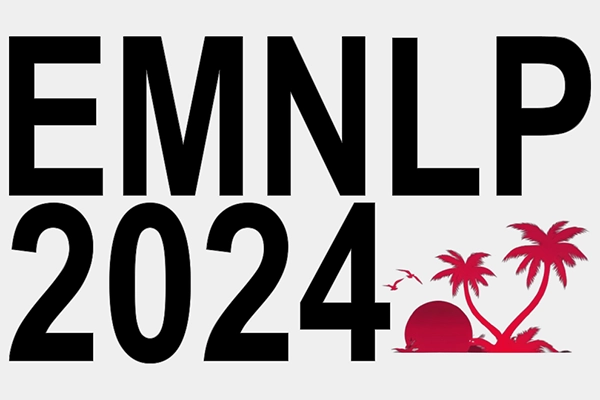
06.11.2024
MCML researchers with 20 papers at EMNLP 2024
Conference on Empirical Methods in Natural Language Processing (EMNLP 2024). Miami, FL, USA, 12.11.2024 - 16.11.2024
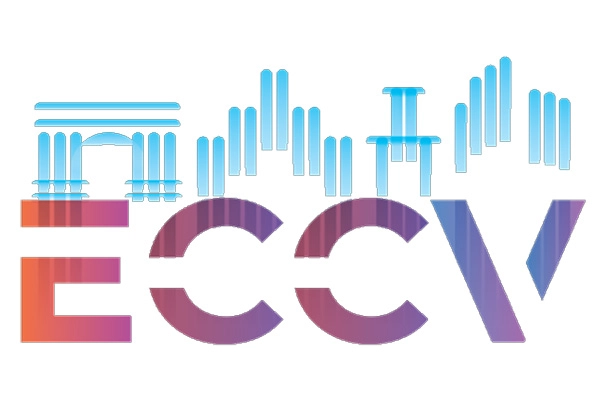
26.09.2024
MCML researchers with 18 papers at ECCV 2024
18th European Conference on Computer Vision (ECCV 2024). Milano, Italy, 29.09.2024 - 04.10.2024
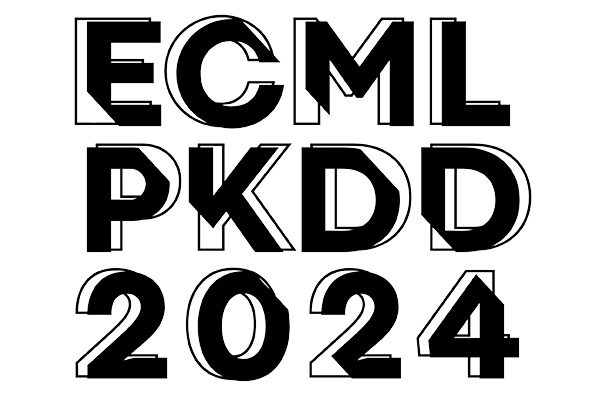
10.09.2024
MCML at ECML-PKDD 2024
We are happy to announce that MCML researchers are represented at ECML-PKDD 2024.
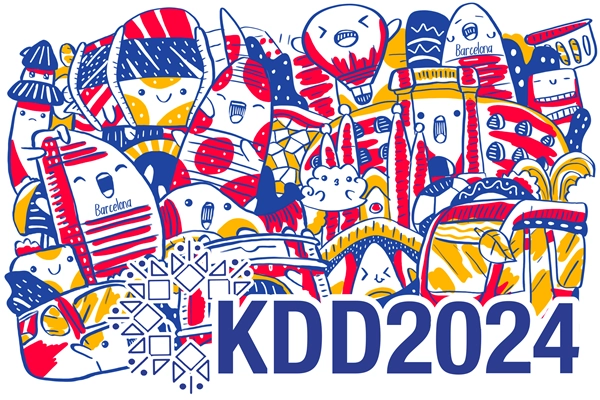
20.08.2024
MCML researchers with two papers at KDD 2024
30th ACM SIGKDD International Conference on Knowledge Discovery and Data (KDD 2024). Barcelona, Spain, 25.08.2024 - 29.08.2024
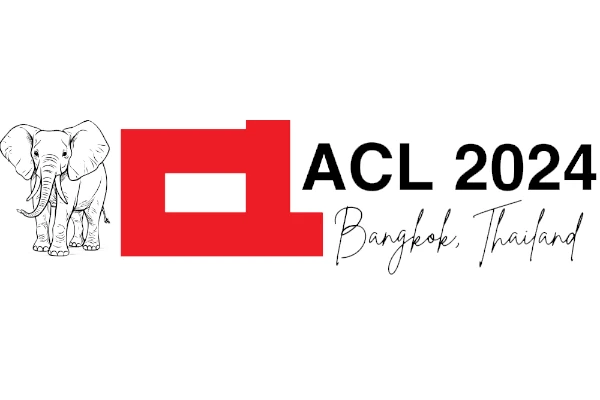
05.08.2024
MCML researchers with 15 papers at ACL 2024
62nd Annual Meeting of the Association for Computational Linguistics (ACL 2024). Bangkok, Thailand, 11.08.2024 - 16.08.2024
